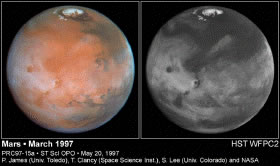This image of Martian clouds illustrates the fact that they are found only in the equatorial region.
Click on image for full size
Image from: Hubble
Martian Clouds
Unlike the Earth, where clouds are found around the entire globe, on Mars, clouds seem only to be found near the equator, as shown in this Hubble telescope image. This may be because water of Mars may only exist at equatorial regions.
As early as 1796 scientists were reporting "yellow", and "white" or "bluish" clouds in the Martian atmosphere. With data from the Mariner 9 mission, scientists could finally prove that the clouds were made of water. Mars Global Surveyor is providing more proof of the existence of water clouds.
More study is needed to understand just how the clouds come and go in the Martian atmosphere. For example, even though clouds have been found, there is no proof it actually rains on Mars! Precipitation of water depends upon how cold it is. The temperatures in the atmosphere may be too cold for water to fall to the ground as droplets.
As a first step in answering some of those questions, Mars Pathfinder took measurements of many clouds in the Martian sky from the surface of Mars itself. Scientists are studying images of the Martian sky from the 80-day mission. The Mars '98 mission will carry a weather satellite, just like the instruments that are used to bring you the weather on the evening news. Then scientists expect to receive much better data about Martian weather.
You might also be interested in:

How did life evolve on Earth? The answer to this question can help us understand our past and prepare for our future. Although evolution provides credible and reliable answers, polls show that many people turn away from science, seeking other explanations with which they are more comfortable.
...more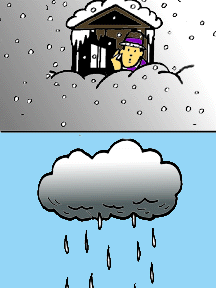
Precipitation (pre-sip-uh-tay-shun) is any form of water that falls to the Earth's surface. Different forms of precipitation include drizzle, rain, hail, snow, sleet, and freezing rain. Precipitation
...more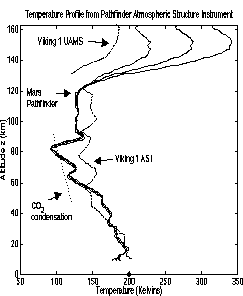
The temperatures in the atmosphere of Mars are doggone cold! This is a graph which shows just what the temperatures are. The measurements were taken by Mars Pathfinder as it decended through the nighttime
...more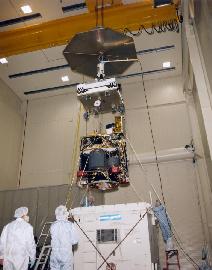
The Mars '98 mission was made of two spacecraft called the Mars Climate Orbiter and the Mars Polar Lander. The Orbiter was going to orbit Mars and search for water. The Lander was supposed to land near
...more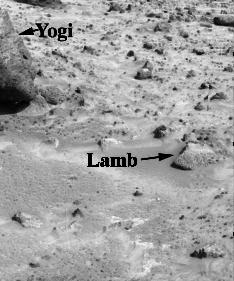
The small, round rock shown here was named The Lamb. Soils found around the Lamb by Mars Pathfinder's Rover were unique. They seem to be made of a special sort of iron which requires more water than is
...more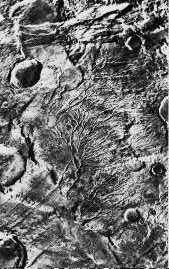
Mars doesn't seem to have very much water. If Mars had lots of water life could survive there. There seems to be *some* water because clouds, fog, and icy polar caps are seen on Mars today. There are also
...more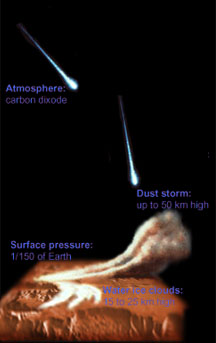
The atmosphere of Mars is much thinner than that of Earth, with a surface pressure averaging 1/100th that at the surface of the Earth. Surface temperatures range from -113oC at the winter pole to 0oC
...more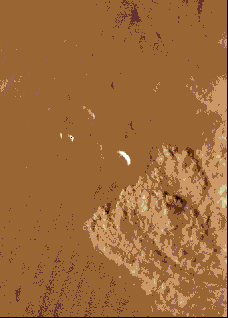
This image shows a local dust storm near the edge of the south polar cap. Viewing of this image at high resolution is recommended. This fascinating image shows dust swirling over a large area. Martian
...more


